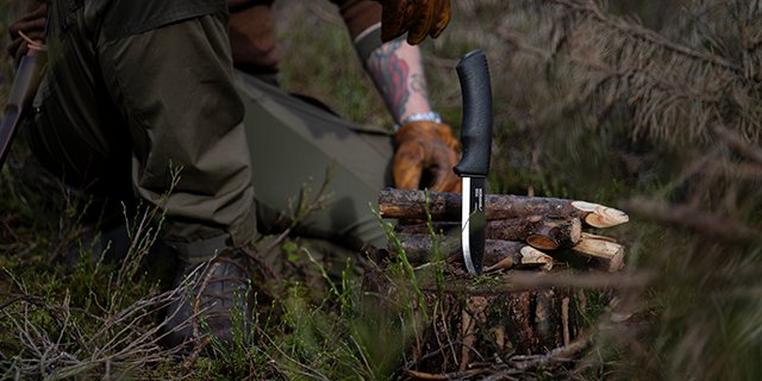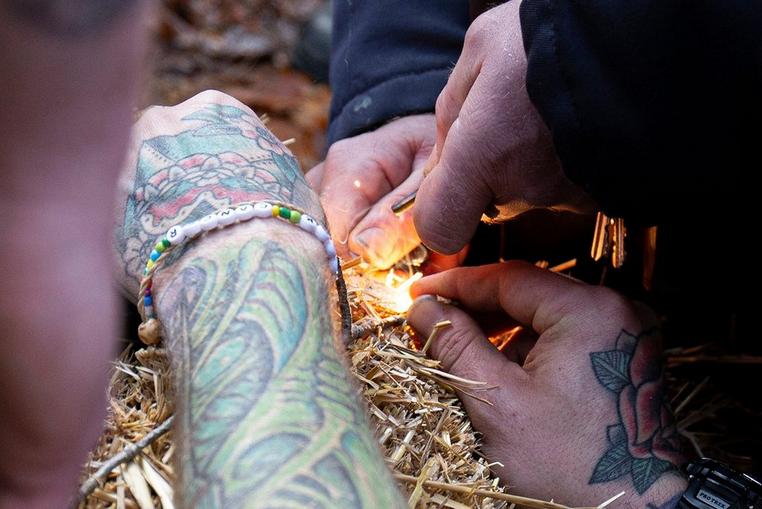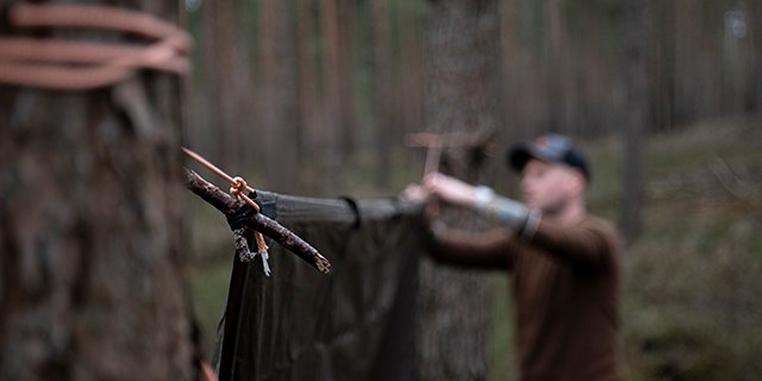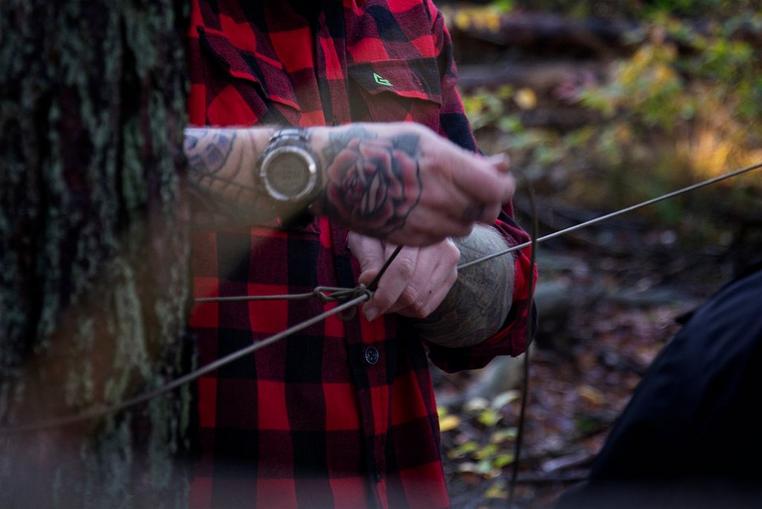Prepping is becoming more and more popular!
We see that more and more people start 'prepping'. The word prepping comes from 'to prepare', so getting ready. The recent pandemic showed us that it is not crazy at all to prepare yourself for something you cannot foresee. It doesn't have to be a global issue, it can also be local. A power outage, for instance. Or a storm causes a leak or flood. In this topic we will tell you more about the five basics of survival and help you choose useful gear that will help you out during emergency situations.
Prepping is for everyone!
You might think prepping is something for those who embark on exciting adventures. Those who might find themselves in ‘extreme circumstances’ from time to time. Something they need to prepare for. Nothing could be further from the truth. More and more people namely store a basic survival kit in their car, or some extra food. Prepping, after all, is not getting ready for the Apocalypse, but preparing for unforeseen circumstances. So, useful for everyone! As such it is not that surprising it is so popular these days.
Why prep?
The future is unsure and as we like to say, better safe than sorry! It is for a reason, after all, that the boy scouts motto is 'be ready!' Owning a flashlight during a power outage will truly bring a smile to your face. Or if you are dealing with a leak and have tarp close to temporarily reduce the leakage. But also on the road it is best to be prepared. Let's say you find yourself without gas and need to wait for help. That is when you need to stay warm, and could use, for instance, a blanket.
What do you need for prepping?
In the survival world a lot of thought is given to prepping. To survive in nature you need a couple basics. Survival enthusiasts work with the five c's: Cutting tool, Combustion device, Cover, Container and Cordage. We will tell you more about that later. These basics focus on surviving in nature, in extreme circumstances, but are also useful in daily situations. We will discuss each of them in this topic.
1. Cutting tool
First of all it is important to own a good 'cutting tool'. A strong bushcraft knife is the best option. A knife like that shouldn't be too big, because you need to be able to do everything with it. Food prep, fine cutting tasks etc. It is also very practical if the spine of the knife is flat, to make sure you can use it as a firestriker (also see the second C). Many choose a multi-tool or pocket knife as a standard emergency tool. These are practical tools, but shouldn't be your only cutting tools. They are simply not strong enough for that.
2. Combustion device
One of the basic needs is heat. You don't only need it to keep yourself warm, but also for cooking. The second C is the 'Combustion device', or a tool to start a fire. For it you can use a lighter or match, but keep in mind that those won't work when wet, or when the lighter is empty. The most foolproof way of starting a fire is a firesteel. You use your pocket knife to scrape alongside a magnetic stick, to create sparks. Starting a fire with a firesteel takes some getting used to. In our info topic about how to use a firesteel you can read more about how to use it.
3. Cover
Another survival basic: Cover. Protection from the elements is key to make sure you stay warm. Your choice for shelter needs to be lightweight, compact and versatile. That is why you should use a PVC tarp with a size of at least 2x3 metres, a number of, as large as possible, trash bags and a rescue blanket. This is a small, lightweight package you can do a lot with. Think of catching rainwater, covering the ground and protection from rain.
4. Container
You can live without food approx. 3 weeks, but only 3 days without water. That is why a container is one of the most important parts of your survival kit. When we talk about a container we mean a pot, pan or a bottle. Something you can use to transport and boil water. These are hard to find or make in nature. Your container needs to be waterproof and should be able to handle heat. You namely need to be able to pop it into the flames to boil water. As such you make sure your water is safe to drink and it enables you to cook. Check out the pans and bottles from Pathfinder and Eagle. Both very popular amongst survival, bushcraft and prepping enthusiasts.
5. Cordage
Last but not least: Cordage. Rope and cord are indispensable during extreme, but also daily situations. This is once again an item that is difficult to make yourself in nature, but is incredibly versatile in use. It is great if your rope is comprised of multiple strands to make sure you can also use it to create thinner ropes. Paracord 550 is most suited. The core of this type of paracord is comprised of 7 strands. All in all this cord has a tensile strength of approx. 250 kg. If, however, the cord is too thick and you don't need the maximum tensile strength, you can simply take the strands apart. Perfect!
Other useful gear
These 5 C's are the ultimate basics. If weight and volume are not as important, you can also expand your survival kit with a number of other practical tools. Think, for instance, of the following items:
- Water filter
You can, of course, boil your water for 3 minutes to make sure you can drink it. But you can also use a water filter. With most filters you can drink immediately drink from a water source. Do, however, always choose a water source with running water and without too much dirt. And please note: not all water filters filter viruses from the water. In Europe and North America virus particles in the water are rare, but it is something to keep in mind.
- Flashlight or head torch
Always great to keep close: a flashlight or head torch. Great if you find yourself without power, need to find something in a dark corner, or need to find your way in the dark. Choose one that is small and compact, like an EDC flashlight. The main advantage of a head torch is that you keep your hands free. And check to see if the light can be recharged and works with batteries. Or even better: a flashlight or head torch that works with both batteries and can be recharged!
Start practicing!
Okay, now you own everything you need to be prepared for anything! But that is not all, you also need to make sure you know how to handle your gear. Practice starting a fire with your firesteel (as we said before, it is more difficult then it seems). Practice a couple useful basic knots. And take good care of your gear, even if you don't need them. Make sure you regularly recharge your rechargeable flashlight, for instance. And remove the batteries if you don't use it the light.
Be creative: comprise your own kit!
Prepping is great for everyone! Not only during extreme emergency situations, but basically anytime something unexpected happens. During a power outage, if something is wrong with the drinking water, or if you get stuck in your car. With the 5 C's you will be prepared for the most extreme circumstances, but feel free to create your own survival kit and add to the list of C's!








?%24center=center&%24poi=poi&%24product-image%24=&fmt=auto&h=500&poi=%7B%24this.metadata.pointOfInterest.x%7D%2C%7B%24this.metadata.pointOfInterest.y%7D%2C%7B%24this.metadata.pointOfInterest.w%7D%2C%7B%24this.metadata.pointOfInterest.h%7D&scaleFit=%7B%28%24this.metadata.pointOfInterest%29%3F%24poi%3A%24center%7D&sm=c&w=1208)



